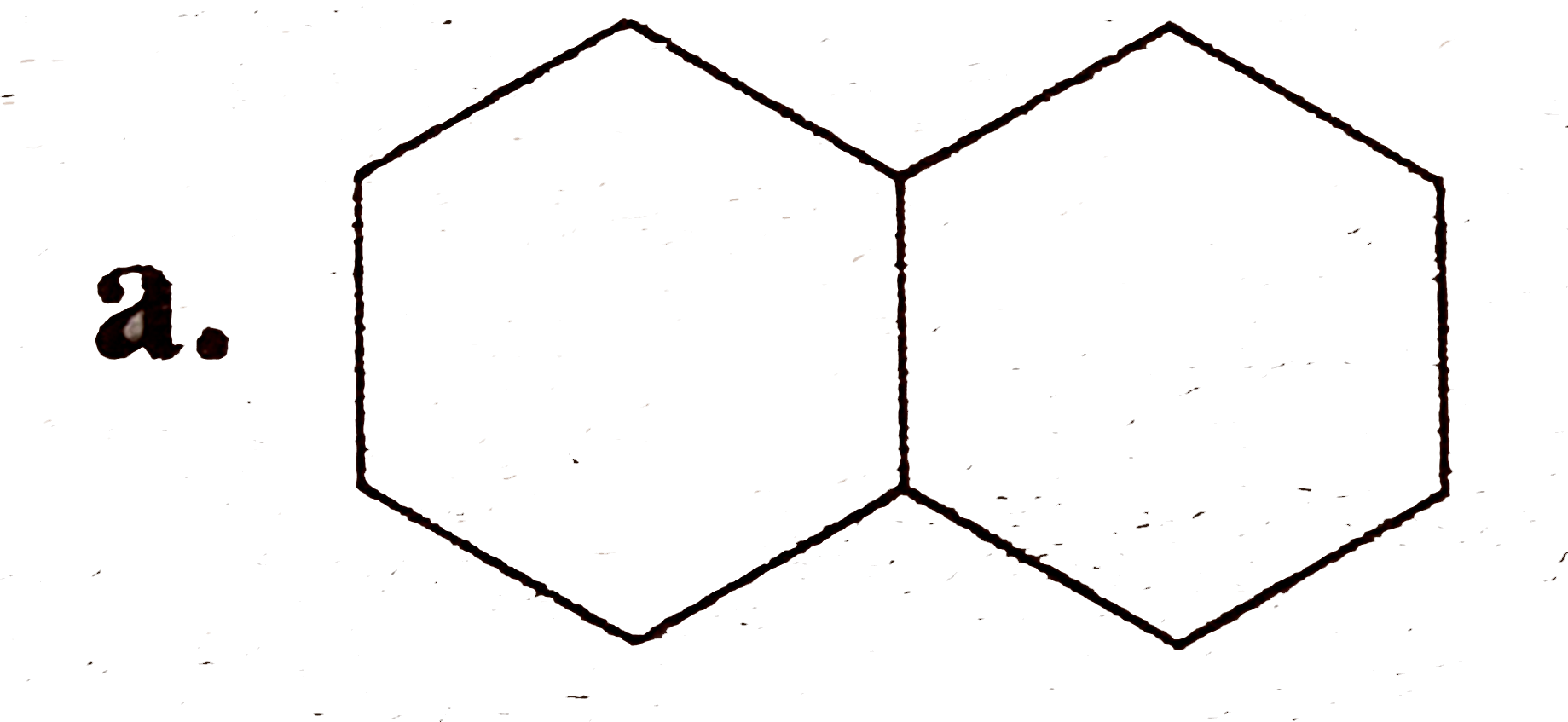Which of the following show diastereomers ?




The correct Answer is:a,b,c.
To determine which of the given structures show diastereomers, we need to understand what diastereomers are. Diastereomers are stereoisomers that are not mirror images of each other. They typically arise when a molecule has multiple stereocenters or when geometric isomerism is present, such as in alkenes.
1. Identify the Structures: First, we need to look at the provided structures (A, B, C, etc.) and identify the presence of double bonds and stereocenters.
2. Analyze Structure A:
- This structure has a double bond and can exist in two forms: cis and trans.
- In the cis form, the higher priority groups are on the same side of the double bond, while in the trans form, they are on opposite sides.
- Since these two forms are not mirror images of each other, they are diastereomers.
3. Analyze Structure B:
- This structure also has a double bond and can exist in syn and anti configurations.
- The syn configuration has substituents on the same side of the double bond, while the anti configuration has them on opposite sides.
- Again, these two configurations are not mirror images, indicating that they are diastereomers.
4. Analyze Structure C:
- This structure has a double bond and can exhibit cis and trans isomerism.
- Similar to the previous structures, the cis and trans forms are not mirror images of each other, confirming that they are diastereomers.
5. Analyze Structure D:
- This structure has a double bond but has two identical groups on one side of the double bond.
- Since there are no different substituents on either side of the double bond, it cannot form diastereomers. The presence of identical groups means that any configuration will not yield distinct stereoisomers.
6. Conclusion:
- Structures A, B, and C can show diastereomers due to the presence of different configurations (cis/trans or syn/anti).
- Structure D does not show diastereomers because it has identical groups on one side of the double bond.
Final Answer:
The structures that show diastereomers are A, B, and C.
---
- This structure has a double bond and can exist in two forms: cis and trans.
- In the cis form, the higher priority groups are on the same side of the double bond, while in the trans form, they are on opposite sides.
- Since these two forms are not mirror images of each other, they are diastereomers.
- This structure also has a double bond and can exist in syn and anti configurations.
- The syn configuration has substituents on the same side of the double bond, while the anti configuration has them on opposite sides.
- Again, these two configurations are not mirror images, indicating that they are diastereomers.
- This structure has a double bond and can exhibit cis and trans isomerism.
- Similar to the previous structures, the cis and trans forms are not mirror images of each other, confirming that they are diastereomers.
- This structure has a double bond but has two identical groups on one side of the double bond.
- Since there are no different substituents on either side of the double bond, it cannot form diastereomers. The presence of identical groups means that any configuration will not yield distinct stereoisomers.
- Structures A, B, and C can show diastereomers due to the presence of different configurations (cis/trans or syn/anti).
- Structure D does not show diastereomers because it has identical groups on one side of the double bond.
The structures that show diastereomers are A, B, and C.
Topper's Solved these Questions
- ALKENES AND ALKADIENESBOOK - CENGAGE CHEMISTRY ENGLISHCHAPTER - ALKENES AND ALKADIENESEXERCISE - Single Correct Answer Type
62 Videos
- ALKENES AND ALKADIENESBOOK - CENGAGE CHEMISTRY ENGLISHCHAPTER - ALKENES AND ALKADIENESEXERCISE - Archives(ASSERTION-REASIOING)
4 Videos
- ALKENES AND ALKADIENESBOOK - CENGAGE CHEMISTRY ENGLISHCHAPTER - ALKENES AND ALKADIENESEXERCISE - linked Comprehension Type
38 Videos
- ALKANES AND CYCLOALKANESBOOK - CENGAGE CHEMISTRY ENGLISHCHAPTER - ALKANES AND CYCLOALKANESEXERCISE - Archives
13 Videos
- ALKYNESBOOK - CENGAGE CHEMISTRY ENGLISHCHAPTER - ALKYNESEXERCISE - Exercises (Archives - Analytical and Desriptive Type)
4 Videos
Similar Questions
Knowledge Check
R, S-configuration is a useful tool for determination of enantiomers, diastereomers and homomers. If configuration of all chiral centers are opposite then structures are enantiomers, if all chiral centers have same configuration then they are homomers and if some have same configuration and some have opposite configuration then they are diastereomers.

Which of the following is not diastereomer?AI and IIIBII and IVCI and IVDIII and IVR, S-configuration is a useful tool for determination of enantiomers, diastereomers and homomers. If configuration of all chiral centers are opposite then structures are enantiomers, if all chiral centers have same configuration then they are homomers and if some have same configuration and some have opposite configuration then they are diastereomers.

Which of the following is not diastereomer?AI and IIIBII and IIICIII and IVDII and IVWhich one of the following is a diastereomer of (R)-4-bromo-cis-2-hexene ?
A(S)-4-bromo-cis-2-hexeneB(S)-5-bromo-trans-2-hexeneC(R)-4-bromo-trans-2-hexeneD(R)-5-bromo-trans-2-hexene

